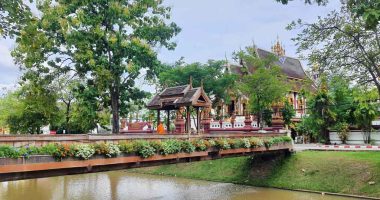Discovering Pud Jor Shrine
A Hidden Gem in Chiang Mai
Nestled in the heart of Chiang Mai, Thailand, Pud Jor Shrine is a serene sanctuary that captivates travelers with its rich history and spiritual ambiance. This lesser-known Chinese temple, located in the bustling Warorot Market area, offers a peaceful retreat from the city’s vibrant streets. Visitors are drawn to its intricate architecture and cultural significance, making it a must-visit for those seeking authentic experiences.
Historical and Cultural Significance
Roots in Chinese Heritage
Pud Jor Shrine, also known as Pung Tao Kong Shrine, is a testament to Chiang Mai’s Chinese community, which settled in the region centuries ago. Built to honor Taoist deities, the shrine features ornate decorations, including dragon motifs and red lanterns, symbolizing prosperity and good fortune. Its historical ties to Chinese immigrants add a unique layer to Chiang Mai’s diverse cultural tapestry.
Architectural Beauty
Intricate Design and Symbolism
The shrine’s architecture is a visual delight, with vibrant colors and detailed craftsmanship. The main hall houses altars adorned with incense and offerings, creating a sacred atmosphere. The roof, adorned with ceramic tiles and mythical creatures, reflects traditional Chinese aesthetics. This blend of artistry and spirituality makes Pud Jor Shrine a photographer’s paradise and a place for quiet reflection.
Visitor Experience
Immersing in Spiritual Practices
Travelers to Pud Jor Shrine can participate in rituals such as lighting incense or offering prayers, guided by the welcoming local community. The shrine’s proximity to Warorot Market allows visitors to combine spiritual exploration with shopping for local crafts and street food. Its tranquil courtyard offers a space to relax, making it ideal for travelers seeking both culture and calm.
Practical Travel Tips
Planning Your Visit
Pud Jor Shrine is easily accessible near Chiang Mai’s Night Bazaar, open daily with no entry fee, though donations are appreciated. The best time to visit is early morning to avoid crowds and experience the shrine’s serene ambiance. Respectful attire, covering shoulders and knees, is recommended to honor the sacred space. Pair your visit with a stroll through nearby markets for a full cultural immersion.









